A history of Grand Seiko in ten chapters. Vol.7 The two cultures of Shinshu and Iwate embrace and complement each other.
FUSION Grand Seiko: The power of synergy
Daini Seikosha (Kameido) was established in 1937 as a spin off from the wristwatch manufacturing division of Seikosha, which was mainly involved in the manufacture of wall clocks. But, during World War II, the company was forced to evacuate from Kameido, Tokyo, to locations outside the capital. The Kameido factory was devastated by the bombings and was in no condition to manufacture watches even after Japan started recovering from the war. One of the evacuation sites, the Suwa factory of Daini Seikosha, then emerged as the driver of the wristwatch business. Eventually, The Kameido plant was rebuilt and the company now had two watch production facilities.
You could say that Grand Seiko depicts the history of friendly competition between the two factories, Daini Seikosha (Kameido) and Daini Seikosha Suwa Factory. After the end of the war, Daini Seikosha Suwa Factory was primarily engaged in the manufacture of men's wristwatches with the clear barometer of high precision performance, and made the Marvel, Lord Marvel, and Crown, among others. In 1959, the merger of Daiwa Kogyo, which was making watch parts, and Daini Seikosha Suwa Factory led to the birth of Suwa Seikosha, which would release to the world the first Grand Seiko.
So, by the late 1960’s, Grand Seiko watches were being made in two facilities, each with their own production methods, designs and cultures. This apparently complicated situation, however, had an important and lasting consequence. It spawned a rivalry between the two teams that advanced the performance, quality and technological scope of Grand Seiko in a way that made it, within just a few years, a leading player on the horological stage.
FUSION Grand Seiko: The power of synergy
Daini Seikosha (Kameido) was established in 1937 as a spin off from the wristwatch manufacturing division of Seikosha, which was mainly involved in the manufacture of wall clocks. But, during World War II, the company was forced to evacuate from Kameido, Tokyo, to locations outside the capital. The Kameido factory was devastated by the bombings and was in no condition to manufacture watches even after Japan started recovering from the war. One of the evacuation sites, the Suwa factory of Daini Seikosha, then emerged as the driver of the wristwatch business. Eventually, The Kameido plant was rebuilt and the company now had two watch production facilities.
You could say that Grand Seiko depicts the history of friendly competition between the two factories, Daini Seikosha (Kameido) and Daini Seikosha Suwa Factory. After the end of the war, Daini Seikosha Suwa Factory was primarily engaged in the manufacture of men's wristwatches with the clear barometer of high precision performance, and made the Marvel, Lord Marvel, and Crown, among others. In 1959, the merger of Daiwa Kogyo, which was making watch parts, and Daini Seikosha Suwa Factory led to the birth of Suwa Seikosha, which would release to the world the first Grand Seiko.
So, by the late 1960’s, Grand Seiko watches were being made in two facilities, each with their own production methods, designs and cultures. This apparently complicated situation, however, had an important and lasting consequence. It spawned a rivalry between the two teams that advanced the performance, quality and technological scope of Grand Seiko in a way that made it, within just a few years, a leading player on the horological stage.
Read More
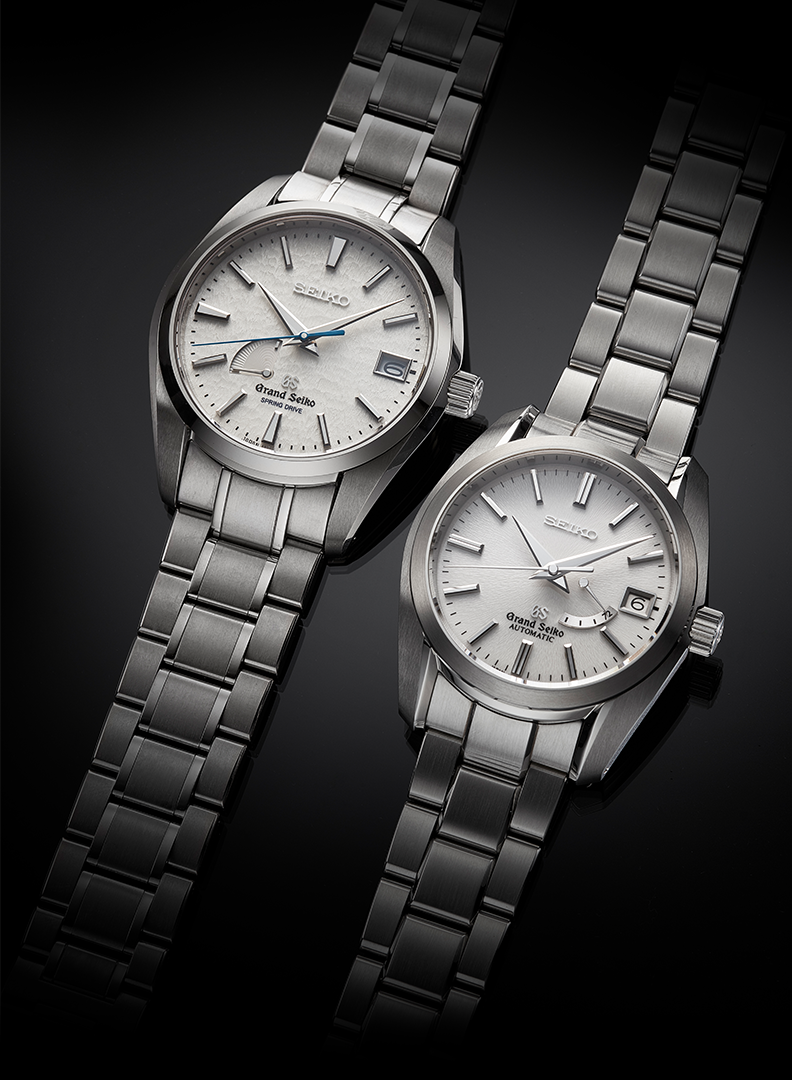
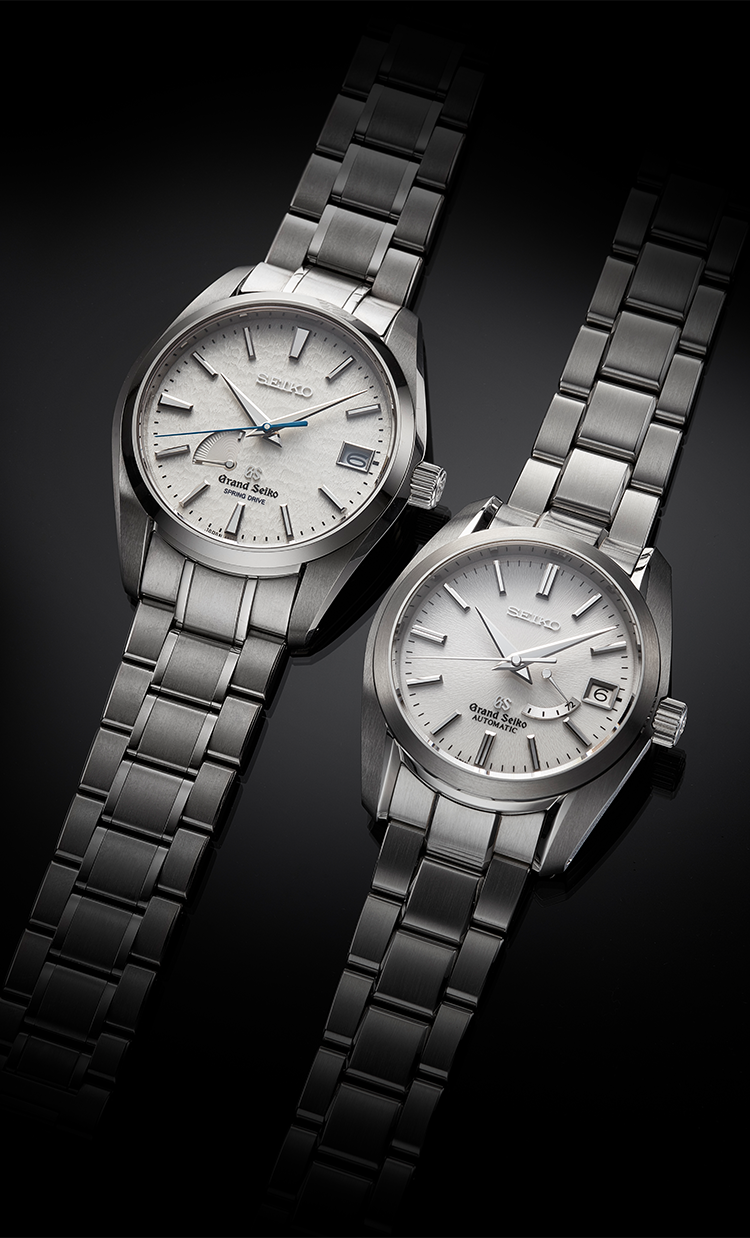
Left: Suwa Seikosha (now Seiko Epson) was the driver of quartz technology. It also perfected the Spring Drive movement in 1999. The photo shows SBGA011, the Spring Drive high-intensity titanium model released in 2005.
Right: In 1998, Daini Seikosha (now Seiko Instruments) launched the 9S mechanical movement which immediately became the backbone of the Grand Seiko mechanical collection. The photo shows SBGL001, the first mechanical movement with a three-day power reserve.
The history of Suwa Seikosha and Daini Seikosha.
Suwa Seikosha
Caliber 3180 was the movement that powered the first Grand Seiko in 1960. It was built on the company’s 60 years of mechanical watchmaking experience and offered a hack function for second hand setting and a micro adjuster for fine regulation, and key components were treated with an epilame coating for reduced friction and enhanced oil retention.
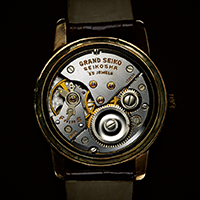
The first domestically manufactured, automatic winding 10 beat movement. Increasing the oscillation rate to 10 beats made the accuracy of the watch less susceptible to external vibration, differences in position, changes in amplitude, and other influences. The company’s own "Magic Lever" system was used in the automatic winding mechanism.
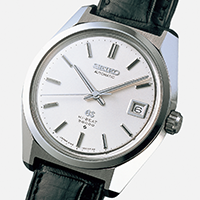
The V.F.A. (Very Fine Adjusted) model was designed as the "ultimate wristwatch," aiming to achieve a level of precision in a mechanical wristwatch that would match that of the quartz watch that the company launched in the same year.
Through painstaking adjustments made by highly skilled craftsmen, it had a precision rate of ±1 minute a month, the highest level of precision that Grand Seiko had ever achieved.
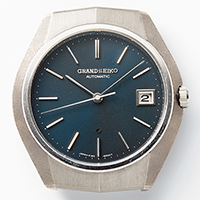
As soon as was possible after the traumas of the war, Daini Seikosha’s Suwa factory set itself the goal of creating a new generation of wristwatches for men. Thanks to advances such as Seiko Marvel in 1956 and Gyro Marvel in 1959, production capacity expanded and the company, whose name was soon changed to Suwa Seikosha, embarked on a journey of technological advancement that has perhaps never been matched, before or since, in the horological industry. Existing technologies like automatic winding systems and high-beat escapements were embraced and enhanced and new technologies like quartz, Kinetic and Spring Drive were invented.
Daini Seikosha (Kameido)
Daini Seikosha (Kameido) also worked hard to develop a watch which could meet the high standards set for Grand Seiko. This caliber, 4402, was introduced in 1965 and after two years of refinement it became Kameido’s first Grand Seiko, 44GS in 1967.
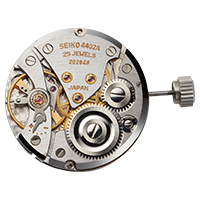
This was the second generation Grand Seiko from Daini Seikosha (Kameido), following the 44GS it released in 1967. The manual winding movement is only 3.5 mm thick. Along with the 61GS, it established Grand Seiko as one of the world’s few masters of 10-beat movements.
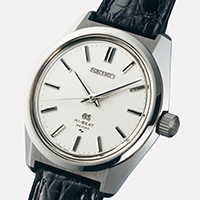
The name VFA (Very Fine Adjusted) was given to this watch, just as to the 61GS VFA from Suwa Seikosha, as both were, in their day, the ultimate in precision. A special inner curve was added to the hairspring to minimize shift in the center of gravity. Thanks to the skills learned through participation in the Japanese and European observatory contests, this extremely delicate and precise craftsmanship skill was made possible.
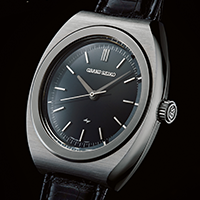
The Kameido facility had been almost completely destroyed in the war and, for some years, was understandably in no position to develop new technologies. So it focused on what it knew best and, paradoxically, this became its greatest strength. Though the team’s dedicated focus on mechanical watches and especially on those for women, slowly but surely, it upgraded and developed its traditional watchmaking skills, with the result that it was the direct successors to the post-war generation of Kameido’s craftsmen that created the widely acclaimed 9S caliber in 1998.
